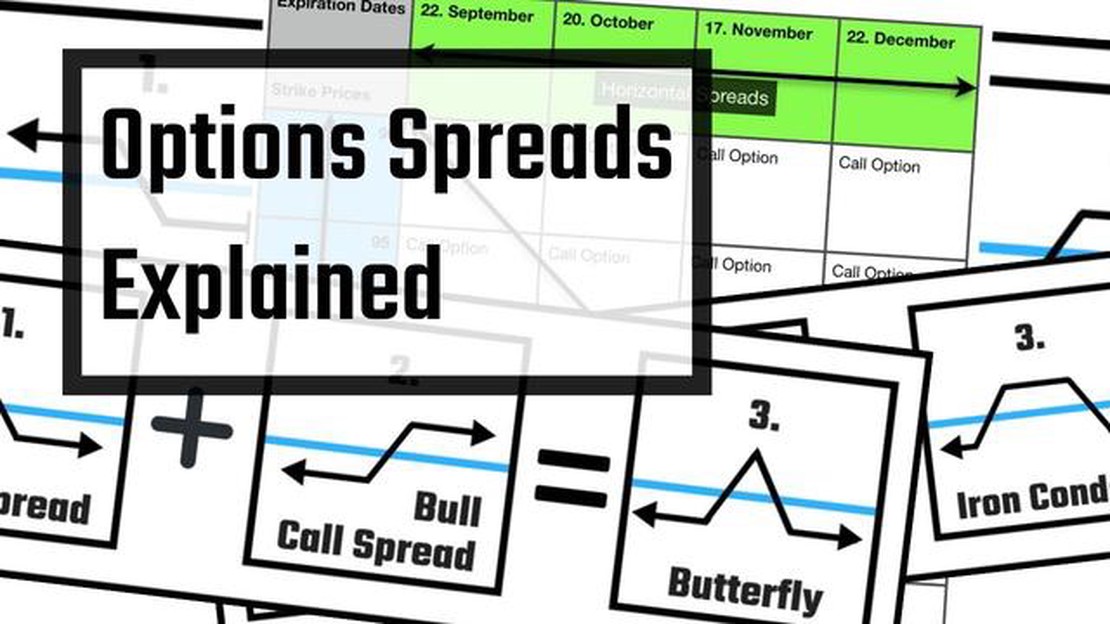Is XML Editor Free? Find out the Best Free XML Editors
Is XML Editor Free? Find Out Here! XML, or eXtensible Markup Language, is widely used in the field of web development and data storage. It provides a …
Read Article
Option trading can be a highly profitable endeavor, but it also involves a significant amount of risk. One way to mitigate this risk and increase the potential for profit is by using option spread strategies. Option spreads involve the simultaneous buying and selling of multiple options contracts, allowing traders to take advantage of price differences between the options.
There are several different types of option spreads, each with its own unique characteristics and potential benefits. In this comprehensive guide, we will explore the various option spread strategies, including bull spreads, bear spreads, calendar spreads, and more. We will examine the mechanics of each strategy, the ideal market conditions for their use, and the potential risks and rewards involved.
One popular option spread strategy is the bull spread. This involves buying a call option with a lower strike price and simultaneously selling a call option with a higher strike price. The goal of the bull spread is to profit from a bullish market by capturing the difference in the premiums paid and received for the options contracts. This strategy can be particularly effective when there is a moderate increase in the underlying asset’s price.
On the other hand, a bear spread involves buying a put option with a higher strike price and selling a put option with a lower strike price. The bear spread is used when there is an expectation of a decline in the underlying asset’s price. By taking advantage of the difference in the premiums, traders can profit from this downward movement. The bear spread strategy is often employed during periods of market uncertainty or when a bearish trend is anticipated.
Calendar spreads are another type of option spread strategy that involves buying and selling options with different expiration dates. This strategy allows traders to profit from the difference in time decay between the options. If the underlying asset’s price remains within a certain range during the life of the options, traders can potentially profit as the near-term options lose value at a faster rate than the longer-term options.
Option spread strategies can provide traders with a range of opportunities to profit from both bullish and bearish market conditions, as well as from time decay. However, it is essential to understand the mechanics and risks associated with each strategy before implementing them in a trading plan. This comprehensive guide will serve as a valuable resource for both novice and experienced options traders looking to explore and utilize these various option spread strategies.
Option spread strategies are commonly used by traders to take advantage of different market conditions and to manage risk. By combining multiple options contracts, traders can create a spread that offers unique risk-reward profiles.
What is an option spread?
Read Also: US Gold Reserves: How Much Gold Does the US Have in Reserve?
An option spread involves buying and selling options contracts of the same underlying asset with different strike prices or expiration dates. The goal of an option spread is to profit from the difference in price movements between the two options.
Types of option spread strategies
There are several different types of option spread strategies that traders can utilize:
Benefits of option spread strategies
Read Also: Does FBS have MT4? - Everything you need to know about MT4 trading platform at FBS
Option spread strategies offer several advantages to traders:
Conclusion
Understanding option spread strategies is essential for traders who wish to maximize their profits and minimize their risks. By utilizing these strategies, traders can take advantage of different market conditions and create unique risk-reward profiles.
Option spread strategies are trading strategies that involve the simultaneous buying and selling of different strike prices, expiration dates, or types of options. They are used to limit risk, generate income, or take advantage of specific market conditions.
A bull call spread is a strategy where an investor buys a call option with a lower strike price and sells a call option with a higher strike price. This strategy is used when the investor expects the price of the underlying asset to increase modestly.
A butterfly spread is an options trading strategy that involves buying and selling multiple options with the same expiration date, but different strike prices. The strategy gets its name from the shape of the profit/loss graph, which resembles a butterfly. It is typically used when the investor expects the price of the underlying asset to remain relatively stable.
The risk/reward ratio of a credit spread is favorable for the seller of the spread. The maximum profit is limited to the credit received from selling the spread, while the maximum loss is limited to the difference in strike prices minus the credit received. This means that the potential profit is greater than the potential loss.
Is XML Editor Free? Find Out Here! XML, or eXtensible Markup Language, is widely used in the field of web development and data storage. It provides a …
Read ArticleUnderstanding How Futures Work Interested in the world of finance? Futures trading is a critical component of the global financial markets, allowing …
Read ArticleDoes Nadex have demo account? If you are new to trading or just want to test out your strategies in a risk-free environment, you may be wondering if …
Read ArticleCurrent Rwanda currency exchange rate to USD Rwanda is a small East African country known for its stunning landscapes and rich cultural heritage. If …
Read ArticleHow to Become a ZuluTrade Trader Are you interested in learning how to become a ZuluTrade trader? Look no further! This step-by-step guide will walk …
Read ArticleComparing the Black-Scholes Model and the Binomial Model The Black-Scholes pricing model is widely used in the field of finance for estimating the …
Read Article